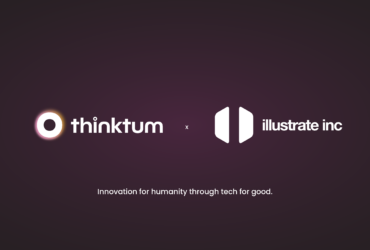A Blueprint for Finding the Right Technology Partner

Somewhere out there is a medium-sized insurance firm currently looking to upgrade its enterprise-wide technology infrastructure. They know they have to move their application process online for some (or all) products and are curious about how an AI-enabled solution might be right for them. They aren’t exactly sure how it works, what’s required, and how expensive a move like this would be. In short, they’re in the dark and feeling around for a light switch.
In this short report, we’ll take you through a typical determination process, and provide you with a game plan for your next technology overhaul or vendor negotiations.
The process
- A typical initial action usually involves someone researching possible solution types, vendor companies, or available software. They develop a long-list of potential vendors.
- The organization contacts a few providers and watches their demos. They develop a short list of candidate firms to narrow the choices and options down.
- A technology meeting is scheduled to bring together tech leaders from both organizations. Both teams then discuss various scenarios to ascertain how the solution reacts to specific circumstances and situations. The more direct the questions, the better off both sides will be as conversations, meetings, and decisions are hashed out at this vitally important step in the selection process. A short-list is then developed.
- A meeting with short-listed vendors is scheduled for executives to discuss pricing or cost implications and a proposal may be provided at this point for the client firm to consider.
- A client-side internal meeting is then scheduled to bring all of the players together to determine the best solution to purchase. Sometimes it’s a single solution provider, while other times, the company may need to use several vendors to get the solution that best fits.
- Once a decision is made, the lawyers get involved and the legal requirements of the relationship are determined through Statements of Work (SOW), then contracting.
The steps listed above are indicative of a fairly easy decision process. There are also times when pricing and solutions are similar and a more difficult decision still has to be made. What do you use as deciding factors then? Apart from the technology, which is key – there are other variables that can make or break a new business relationship. To learn more about thinktum and where we think insurance is going, read thinktum and the future of insurance.
It’s about more than just buying software
Organizations are like people in that they seem to have personalities that come into play during the decision process. Many insurance firms are staid, slow to decide, and culturally conservative. Startups are usually smaller, nimbler, and more comfortable taking risks. It’s vital that both parties are a fit with their new partners for the collaboration to be successful.
Here are some other qualities to look for in a potential vendor relationship:
- Accountability regarding product or solution quality
- Capability of producing the results claimed
- Vendor expertise in the industry, target market, and product type
- Open, honest, and timely communication
- No issues exist regarding regulatory compliance
Most organizations are looking for more than just a client/vendor business relationship. The most long-lasting and successful partnerships are based on cultural compatibility, meaning the two organizations share similar ethics, character, and goals. The very best partnerships are built on a solid foundation of mutual trust. Prospective clients must be honest about their current issues and challenges to give the vendors an opportunity to understand how best to solve them. It doesn’t work if the problems are minimized or misconstrued, since the vendor can’t begin to understand the full scope of the problem.
Vendors should be willing to make an investment in the client organization beyond just selling them software. Vendors can best understand how their technology and support can favor their client’s success. It takes an incredible amount of communication and understanding as to what each organization contributes and acts upon but creates a balanced and equitable relationship. Feedback must run in both organizations’ directions or it isn’t equal. A fully open communication plan will do more to mesh the two companies than almost any other action or process.
The process is a bit like dating
We don’t want to trivialize the vetting process, but there are many similarities between building a relationship with a person, or another company in order to see if both parties are compatible. It begins with getting to know the other person or firm. People either click or they don’t and the same is true for business relationships, partnerships, and strategic alliances. We look for sterling reputations, the ability to work together easily, and a high level of mutual respect for it to happen and both parties have to work at it to maintain it going forward.
Here are some tips to help prospective clients engage with vendors in a way that makes sense and improves both organizations:
- Ask questions
- Find similarities
- Talk to their references and clients
- Build trust
And here are some tips for vendors to better engage with prospective clients:
- Ask a lot of questions to fully understand the client’s needs
- Don’t begin with pushing the solution, start with having many conversations
- Openly communicate all of the challenges the two companies may face
- Describe how your solution will solve the client’s issues and problems
It’s incumbent upon both parties to treat the other side with honesty and integrity. Software developers have to sell their products to remain viable and businesses have to invest in their technology to stay relevant and successful; but you just can’t have a successful partnership without seeing eye to eye on many things.
If your firm is in the early stages of looking for a technology vendor, using the information contained in this document should help you find the right partner and work toward having a successful, mutually advantageous collaboration for years to come.
Want to discuss this further? Let’s chat!





